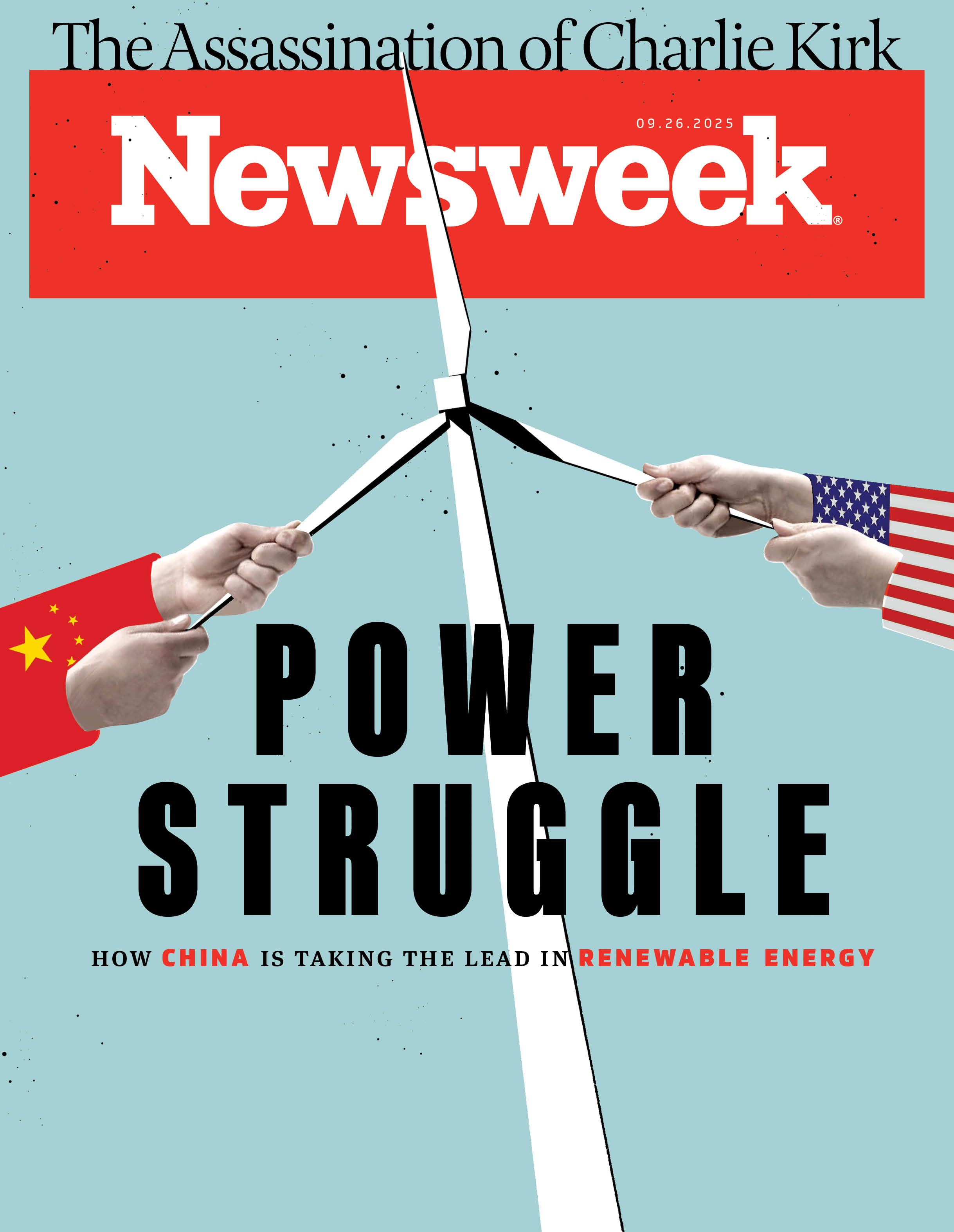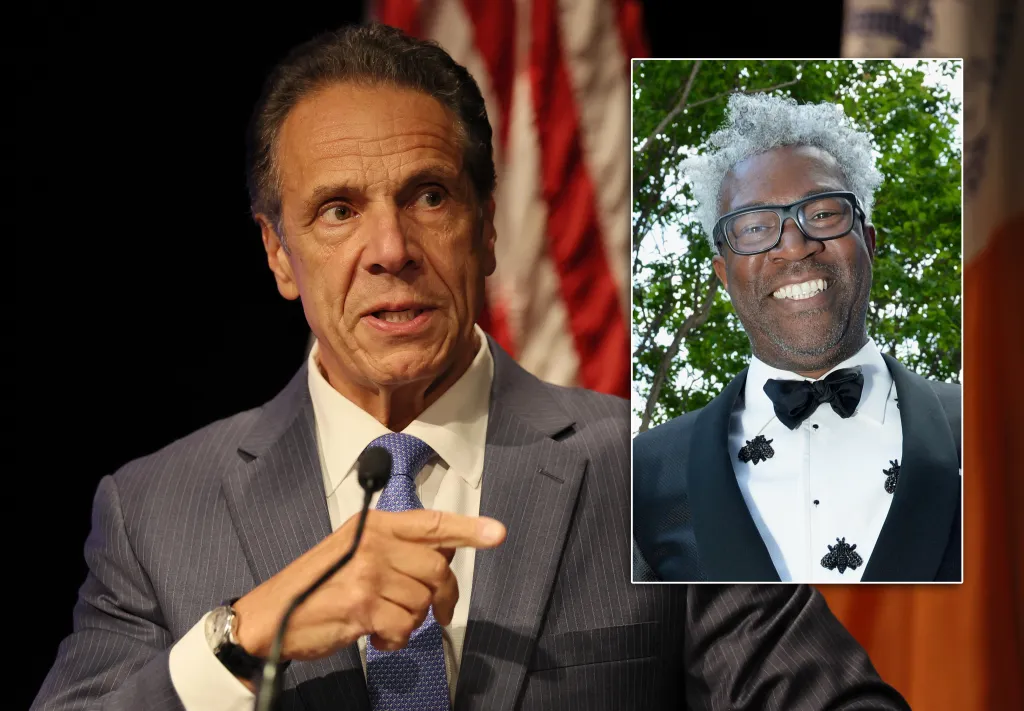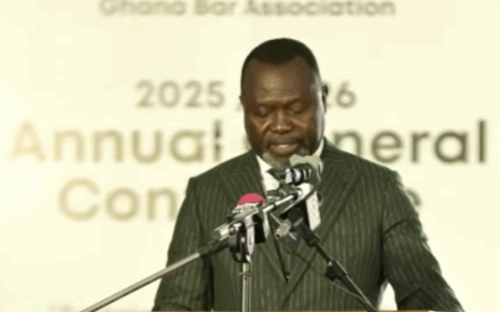
This summer, officials with the China Green Development Group showcased a sprawling solar park nearing completion in the country’s Xinjiang region that covers more than 230 square miles of the Gobi Desert, an area roughly the size of Chicago. The Midong solar project is the world’s largest single-solar power producer, potentially generating enough electricity for 5 million households.
In October, China’s Dongfang Electric Wind Power Co. announced that the world’s largest wind turbine had rolled off the production line at southern China’s Fujian Fuzhou Offshore Wind Power Industrial Park.
According to Dongfang, the behemoth structure will be able to power 55,000 households at peak output and its central hub will stand 606 feet high—roughly twice as tall as the Statue of Liberty.
Chinese automaker BYD is nearing completion of a city-sized electric vehicle and battery manufacturing center in Zhengzhou, in China’s Henan province, that will be roughly 10 times the size of Tesla’s largest U.S. facility.
The expansive EV factories, towering wind turbines and sprawling solar arrays are symbols of China’s enormous global lead in renewable energy and clean technology, some of the fastest growing sectors of the global energy market.
“I would describe the gap in terms of competitiveness between Chinese companies and their U.S. counterparts like an NBA game,” Li Shuo, director of the China Climate Hub at the D.C.-based think tank Asia Society Policy Institute told Newsweek. “We’re in the fourth quarter and the U.S. team is trailing by 30 points.”
President Donald Trump talks about “U.S. energy dominance” while advancing policies to prop up the collapsing market for coal and drill more oil and gas—the leading energy sources of the 20th century. But Chinese President Xi Jinping is showing what it looks like to dominate the energy of the 21st century.
By most estimates, Li said, China controls more than half of global EV manufacturing, 70 percent of wind turbine production and 80 percent of PV solar panel production.
“That dominating position was established by thorough, savvy and consistent policy frameworks in China,” Li explained. China has leveraged its enormous domestic market to provide demand for clean energy, while it steadily developed an industrial ecosystem to innovate along supply chains and lower costs for clean tech products and renewable energy.
“That kind of secret sauce, if you will, that China has simply does not exist here in the U.S.,” Li said.
Change in Strategy
The U.S. energy story, by contrast, has been one of whipsaw swings in policy with each change in party control of Congress and the White House.
President Joe Biden’s 2022 Inflation Reduction Act—passed solely with Democratic votes in Congress—provided historic incentives for clean energy manufacturers and EV and battery makers. The bill’s tax incentives and government-supported loans triggered hundreds of billions of dollars of private investment. The law and related federal programs aimed to boost demand for EVs and clean energy while building up a domestic supply chain so that clean technology made in the U.S. could better compete with that made in China.
“We were effectively fighting back and succeeding over the last several years,” Jason Grumet, CEO of the trade group American Clean Power, told Newsweek.
The U.S. now has about 200 primary clean energy manufacturing facilities, Grumet said, and has been adding dozens of new ones each year. Grumet described a growing energy sector “on the verge of becoming basically self-sufficient” for making final products like solar panels and wind turbines, and developing the capacity to make the components domestically as well.
As demand for electricity surged to power more electric devices in homes and Big Tech’s boom in data centers, renewable energy has been the go-to source for the cheapest, fastest way to generate more juice. The federal Energy Information Administration said that roughly 90 percent of new electricity capacity added to the U.S. grid last year came from a combination of solar, wind and battery storage.
But all of that is changing now. President Trump took office with a pledge to undo what he called the “green new scam” of clean energy policies and instead focus on the “black gold” beneath our feet.
Trump’s signature legislative achievement, the One Big Beautiful Bill Act, that he signed into law on July 4, ends most of the Biden-era supports for clean technology and renewable energy, and his cabinet officials in energy and environmental agencies have gutted grant and loan programs for clean energy.
Grumet said the clean energy industry was prepared to deal with Congress’s phase out of tax subsidies.
“We were prepared to have a future in which the production of these electrons was not receiving government support,” he said. “These technologies are ready to compete.”
However, he said, the administration has also engaged in a much broader assault on clean energy through a range of executive actions further restricting access to remaining tax credits, halting offshore wind projects that are near completion and blocking renewable energy projects on public lands.
“At a time when energy demand is growing, it is mind boggling that a federal government would be actively betting against American companies and American energy technologies,” Grumet said. And the raft of executive orders has thrown plans for clean energy investment into chaos. The pipeline of new projects has now “frozen” he said, and clean power purchase agreements have dropped by about a third.
The net result, Grumet said, will be higher energy prices for consumers, fewer jobs in clean tech manufacturing and a greatly reduced ability to compete globally.
“It’s surprising to me that in a country where we see competition with China as such a significant policy driver, we would wave a white flag when we were on the verge of really making progress,” he said.
The U.S. retreat from clean energy and China’s massive push into the rapidly growing sector will have enormous implications for the world’s energy outlook and global efforts to address climate change.
Power of the Future
A spokesperson for the Department of Energy told Newsweek via email that administration policies reflect the country’s overwhelming reliance on fossil fuels for the combined energy needed for transportation, industry and electrical generation. Wind, solar and batteries provided only about 3 percent of total primary energy consumption last year, the spokesperson said.
“The One Big Beautiful Bill prioritizes baseload power by maintaining credits that help build more baseload generation and ends subsidies for intermittent power sources that make the grid less reliable and drive up energy prices,” the DOE spokesperson said.
“While the previous administration pursued a strategy of energy subtraction that imposed higher costs on American families and made our grids less reliable, President Trump’s administration is advancing a strategy of energy addition and common sense—leveraging all forms of energy that are affordable, reliable, and secure to ensure the United States is able to win the AI race and reindustrialize.”
The spokesperson did not respond to a question about U.S. competition with China on clean energy.
Nobel prize-winning scientist Steven Chu, energy secretary during President Barack Obama’s first term, was fond of citing an old adage from hockey: “Skate to where the puck is going to be, not where it has been.”
Energy policies rooted in the traditional use of fossil fuels cover where the puck has been. But data on global energy investment show strong trend lines pointing to where the puck is going, and it is going toward cleaner electric power.
In its latest report on worldwide energy investment, the International Energy Agency found that this year around $2.2 trillion is going collectively to “renewables, nuclear, grids, storage, low-emissions fuels, efficiency and electrification.” That’s twice as much as the $1.1 trillion going to oil, natural gas and coal.
The IEA noted that the rapid growth in spending on a clean energy transition over the past five years was partly due to climate concerns but primarily driven by countries that wanted to improve their energy security. Europe accelerated spending on renewables and energy efficiency after Russia’s invasion of Ukraine disrupted natural gas supplies. China—the world’s largest oil importer—worked to reduce its reliance on oil and gas imports and “exert leadership in new technology areas,” the IEA said.
With low-carbon energy and electrification investments doubling those in fossil fuels, clean energy is looking like the global growth market in energy. “Energy broadly and clean energy are a massive economic market opportunity and obligation,” Grumet said. “There’s a tremendous market for new energy.”
Several leaders of venture capital firms that specialize in clean tech and renewable energy told Newsweek that one effect of Trump’s energy policy will be to drive investment that would have flowed to the U.S. to other countries with friendlier political environments instead.
Daniel Weiss, co-founder and managing partner of Angeleno Group, a Los Angeles-based venture capital and growth equity investment firm, said that while the U.S. outlook is rocky, “global tailwinds are largely intact” for clean tech as many countries remain committed to an energy transition.
“Nearly 80 percent of the world has sent a signal to capital markets, to investors that we’re on a long-term trajectory moving from a low-efficiency, high-carbon world to a higher-efficiency, low-carbon world,” Weiss told Newsweek earlier this year.
Rob Day, co-founder of the Boston-based firm Spring Lane Capital, said the rest of the world will be “stealing a march” on the U.S. by attracting investment in clean energy. “The U.S. is absolutely going to lose its leadership position on all of these technologies and solutions of tomorrow,” Day told Newsweek in an interview in summer. “And it’s a crying shame.”
The latest Renewable Energy Investment Tracker report from strategic research provider BloombergNEF indicates that a shift in clean energy investment away from the U.S. is already underway. BloombergNEF found that global investment in new clean energy hit a record $386 billion in the first half of this year, a 10 percent increase from 2024. However, of all the major regions, “the U.S. saw the greatest drop in new renewable energy investment.”
Committed spending on U.S. renewable energy was down $20.5 billion, more than a third lower than in the previous six months as “investors recalibrate to the region’s changing policy landscape,” the report said.
Climate Matters
Spend any time talking to people in the U.S. clean energy sector and you will likely hear that China is “eating our lunch.”
Author and climate activist Bill McKibben takes that saying a step further. “We’ve sent a team of red-capped waiters to China to serve the lunch for them,” he told Newsweek in a recent interview about his latest book, Here Comes the Sun, which explains the implications of the rapid growth and plummeting costs of solar power.
The U.S. invented solar power, but we’ve now ceded the solar future to China, he said, in favor of a return to fossil fuels. “If the Trump guys have their way, 15 years from now, America’s going to be like a Colonial Williamsburg of internal combustion, where the rest of the world comes to gawk at how people used to live in the olden days,” McKibben said.
McKibben added that he’s conflicted. As an American, he finds it “galling and frustrating” to see China capitalize on technology Americans developed. But as a climate organizer and global citizen, he knows that China’s booming growth in renewable energy and its flood of solar panel exports creates a rare opportunity for climate action.
A report in August from the clean energy think tank Ember found that Chinese exports of solar panels to African countries rose 60 percent in the last year, presenting a “vast potential to transform the African continent.” Twenty African countries set new records for the imports of solar panels in the past year.
In his book, McKibben relays Pakistan’s rapid adoption of solar, again, thanks to Chinese-made PV panels.
As China seizes the solar moment, “they’re going to seize a lot of political high ground,” he said.
“I don’t particularly like the Chinese government,” McKibben said. As an outspoken journalist and activist, he said he’d probably be jailed in China.
But with the U.S. withdrawing from the Paris climate agreement and the Trump administration issuing reports that deny or downplay climate change, China is now likely to dominate the global climate process going forward.
“And my guess is the Chinese will use it as their ticket to global legitimacy,” McKibben added.
United Nations Secretary-General António Guterres said in a special address in July that the world is at “the dawn of a new energy era” of cheap, clean power that creates an opportunity to meet the climate challenge.
He urged nations to make more ambitious climate pledges at a high-level event he was hosting when the UN General Assembly convened in New York earlier this month.
Li Shuo of the Asia Society Policy Institute said he anticipates China will gradually ramp up its climate commitments.
“Of course, the U.S. being the most powerful country in the world, putting its weight on the fossil fuel side, that is not good news for the global climate agenda,” Li said. “We just need to find a way for the U.S. to hopefully pivot back to the clean tech transition.”
Part of the path forward, Li said, must include reducing the partisan politics around the U.S. energy discussion.
Ilaria Mazzocco is deputy director and senior fellow with the Trustee Chair in Chinese Business and Economics at the Center for Strategic and International Studies, where she focuses on China’s energy supply chains.
“What I think ties the hands of the United States is that energy policy is so partisan and so politicized,” Mazzocco told Newsweek. “It surprises sometimes policy makers when I point out that in China there really is zero ideological partisanship tied to the electrification of the energy system and cars.”
The U.S. energy debate is so tied up in campaign cash and culture wars that power derived from a fossil fuel is viewed as conservative, while energy from a wind turbine is liberal—an Electoral College sorting of electrons.
American Clean Power’s Grumet said that energy policy has become a core aspect of each party’s political base, leading each party to campaign and then govern based on energy ideology rather than pragmatism which, in turn, creates instability.
“The idea that every four years the rug could get pulled out is just devastating to investment in this country,” Grumet told Newsweek.
“If we don’t figure out how to take that kind of ideological edge out of our industrial investment, we are not going to modernize the country,” he added.



